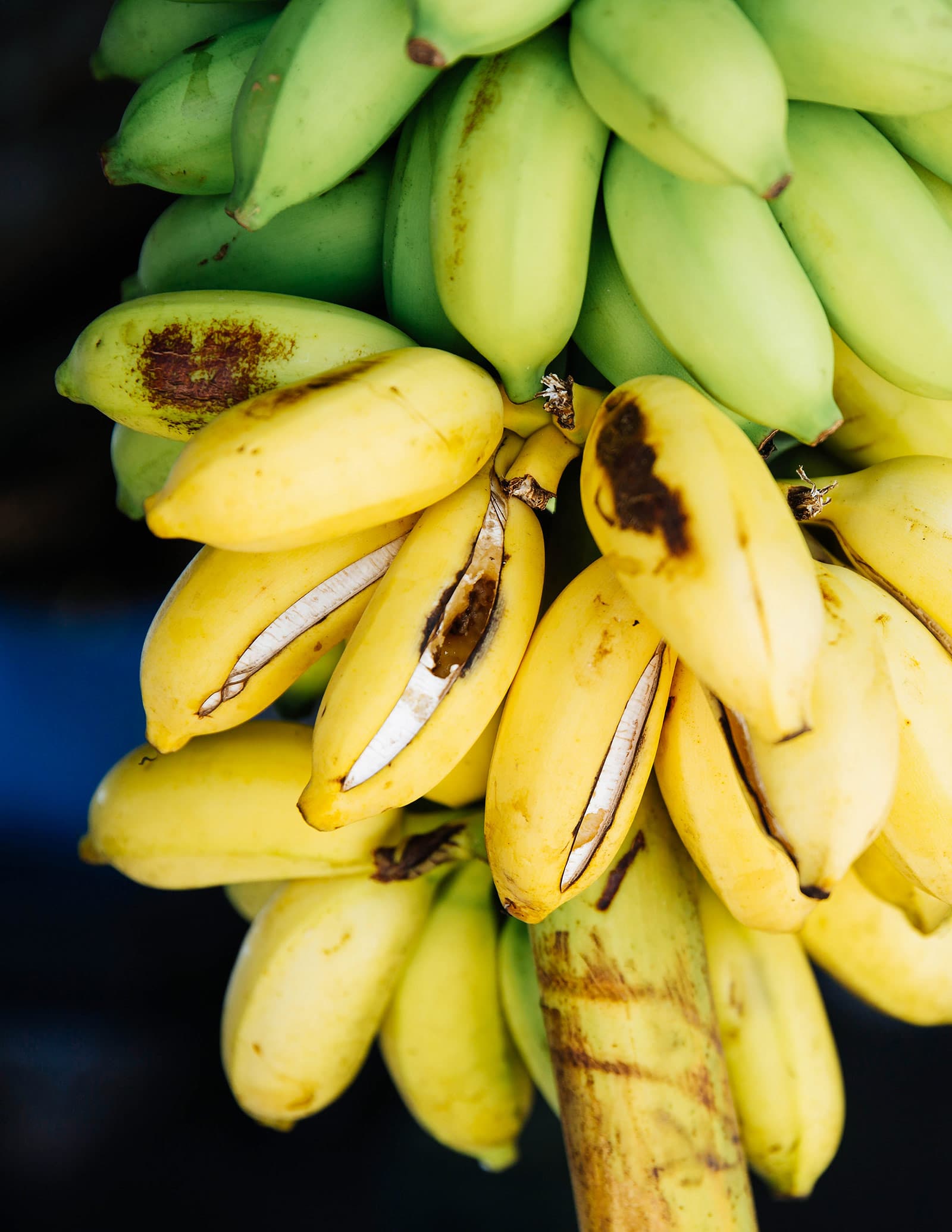Banana trees are one of my favorite additions to an edible landscape, an exotic visual that I certainly miss from my old garden in Southern California. The large leaves provide shade and the stalks produce delicious fruit (otherwise known as banana “fingers”) year-round. In fact, the word banana comes from the Arabic banan, meaning finger. (The earliest banana was only the size of a man’s finger!)
And while they’re usually referred to as trees, bananas are technically plants—or more accurately, herbaceous perennials. Yes, a banana plant is an herb!
In a home garden, banana plants are very low-maintenance, attracting few pests and requiring no pruning (just remove the stalk after you harvest the entire banana bunch). But one issue occasionally comes up: cracked skin on bananas.
Why does this happen and how you can stop it?
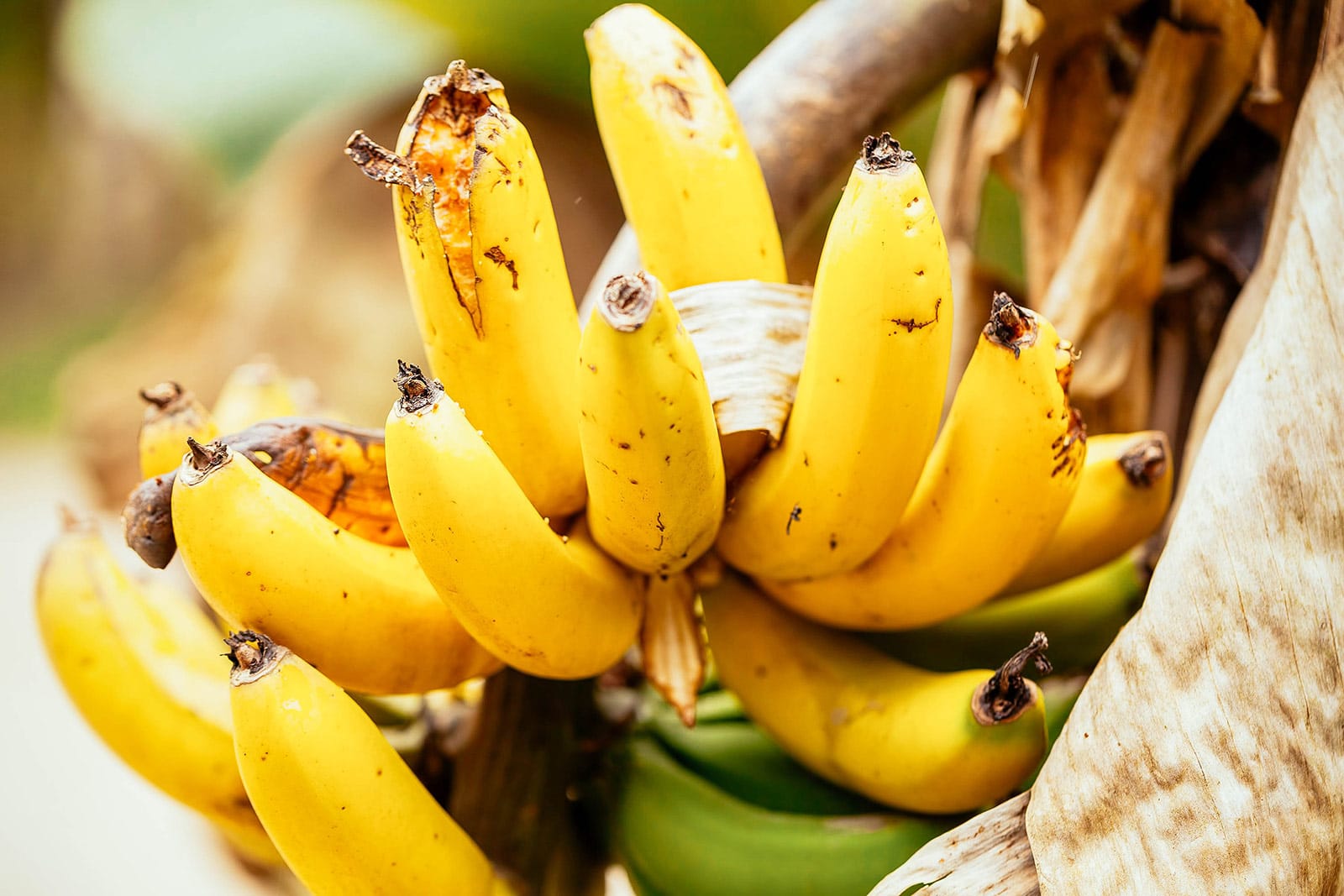
Why bananas split and get cracked skin
The reason your homegrown bananas are splitting open on the bunch is usually because they’re overripe. Bananas should be harvested when they’re still green, and then left to ripen on the counter at room temperature.
How do you know when it’s time to harvest?
Check the fingers (the individual bananas): As the fruits mature, the fingers get fatter but stay green. About four weeks after the fingers stop growing, they should be ready for harvest. The bananas should be plump and firm, and the little flowers on the end should be completely dry or rubbed off easily. When at least 75 percent of the bunch has reached this point, cut off the entire bunch and let the bananas ripen off the tree.
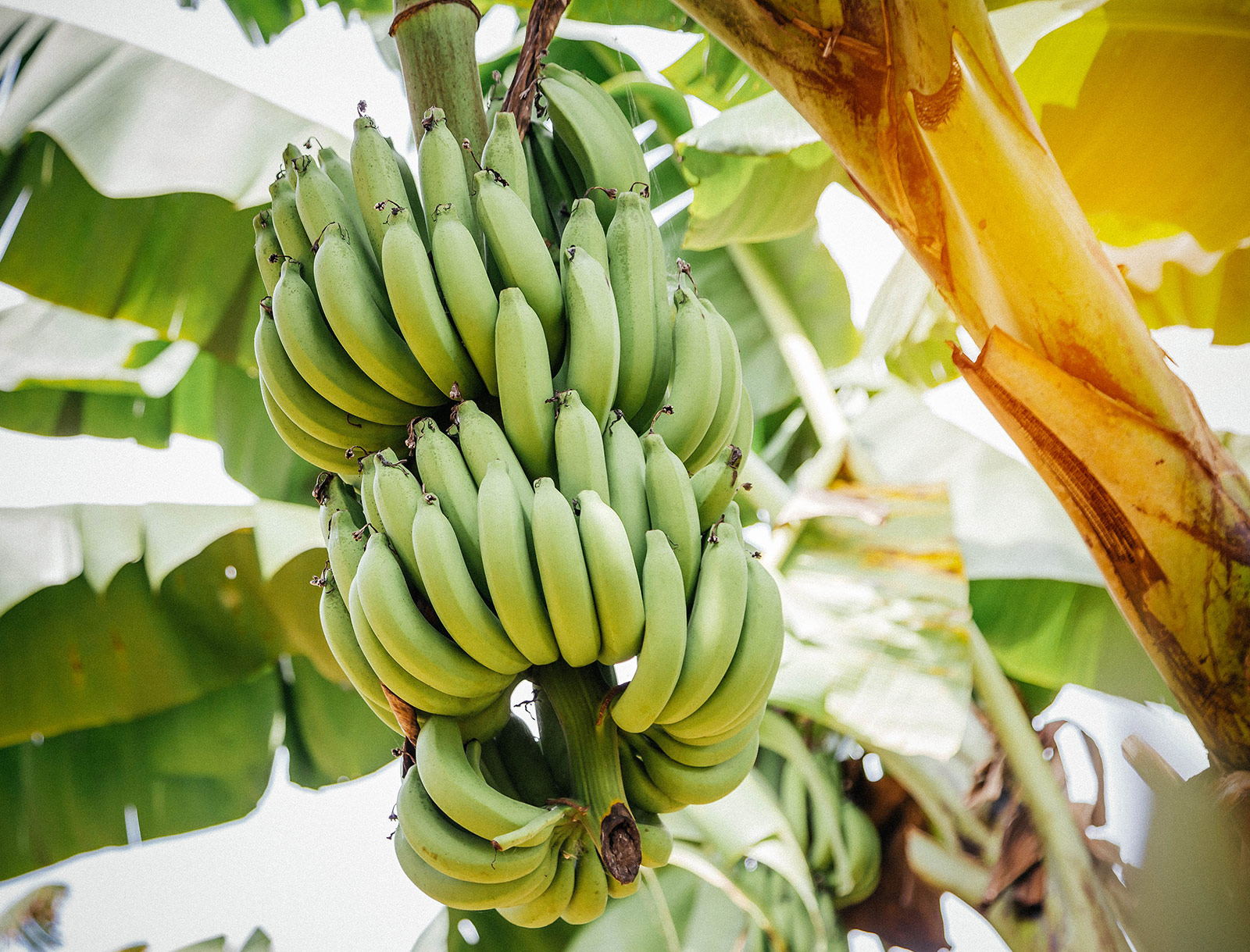
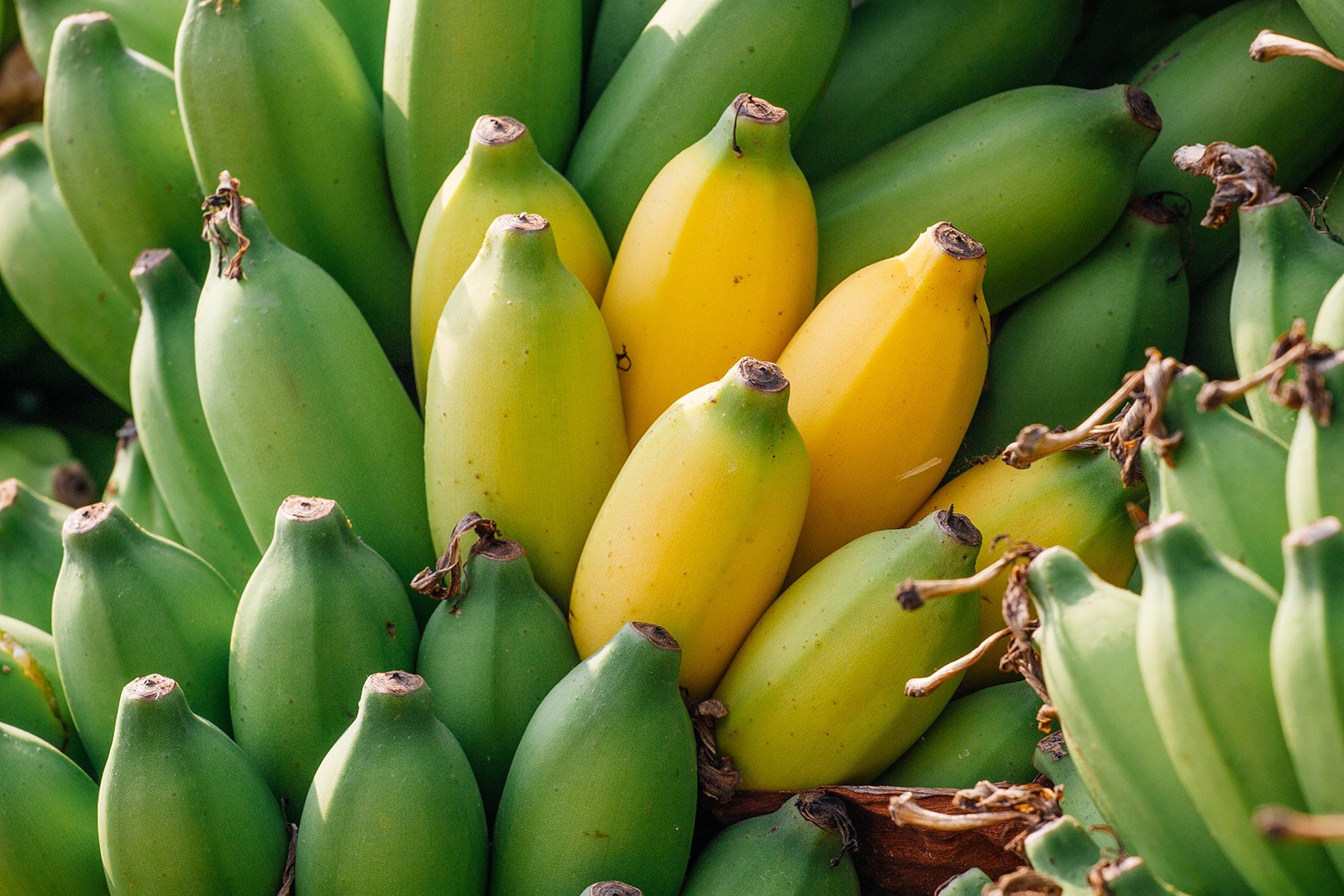
There may be a few bananas that are already turning yellow, and that’s okay. As long as the majority of the bunch is still green, the chances of those bananas splitting (before you’re ready to eat them) is slim.
If you let the bananas continue ripening on the tree, they’re more prone to splitting open (and becoming kind of dry and cottony in consistency).
The fruits can be eaten when they’re partially green, though most people wait until they’re yellow or even mottled with brown spots. During the ripening process, the skin changes from dark green to light green to yellow as the starch in the fruit is converted to sugar. Bananas that are fully brown on the outside are actually at peak sweetness—though this is when they’re usually composted, cooked, or frozen to cook with later.
Try this: Choco Banana Date Cookies aka Breakfast in a Bite
Another reason banana skin may crack open is temperature. While banana trees like consistently warm, humid weather, they suffer under temperature extremes. The peel may split when exposed to high temperatures combined with high relative humidity.
This physiological disorder affects certain varieties of bananas and can occur if there’s a sudden heat spell in your garden, or if you get lots of rain in a short period of time, or if you leave your bananas in a sealed plastic bag in a warm room (creating a greenhouse effect). This study points to the sugars in the flesh pulling moisture from the peel, causing bananas to split at high relative humidity.
The peel-splitting phenomenon also affects store-bought bananas. Though they’re usually stored on the cooler side of room temperature to ripen, the peel may start to crack if the bananas were exposed to higher temperatures during transit or processing.
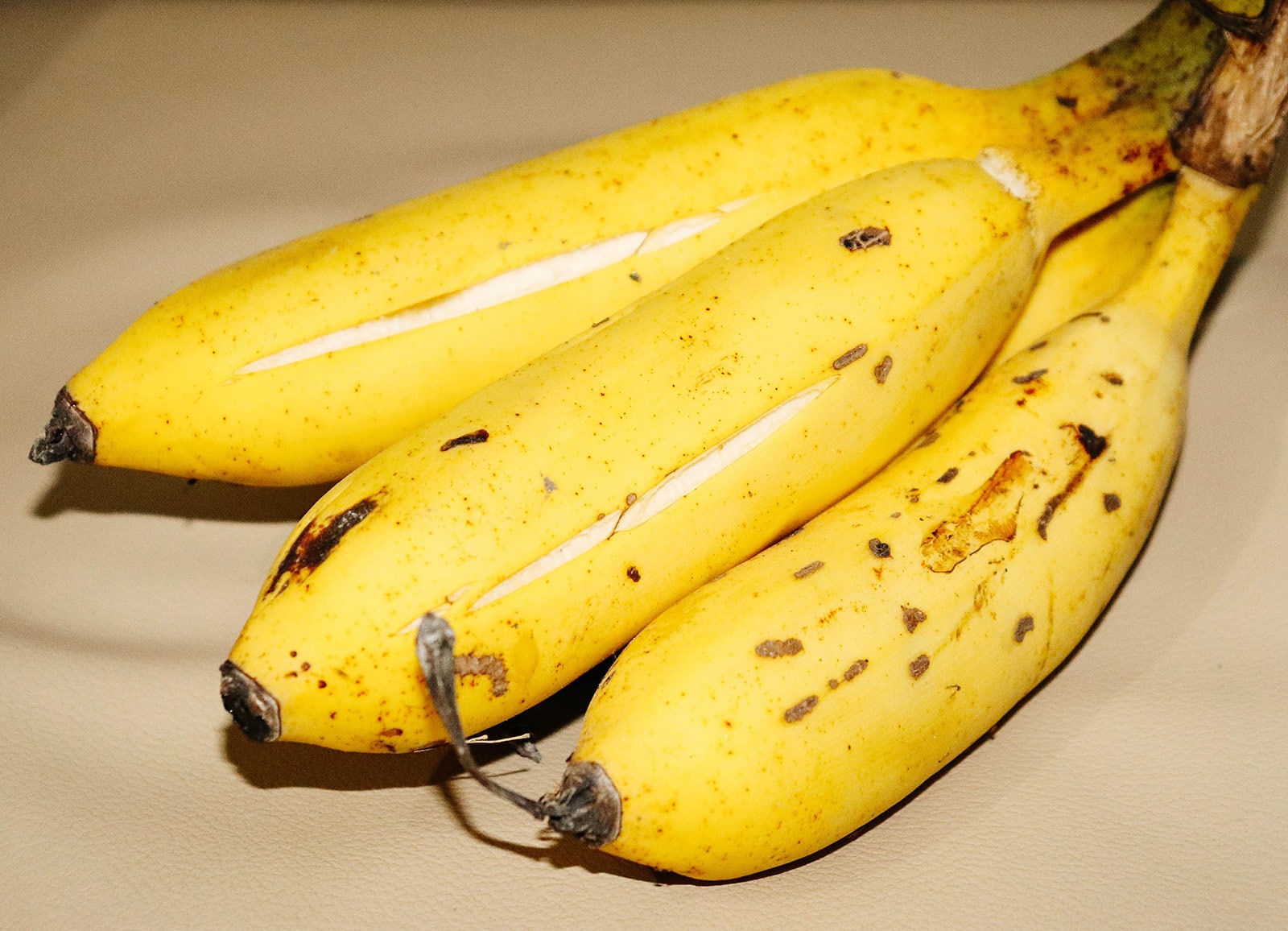
Is it safe to eat bananas that split open?
If you left your bananas on the tree a little too long, harvest them as soon as possible. Leaving fruits to ripen too much makes them more susceptible to pests like birds, squirrels, or insects.
Inspect the bananas for signs of mold, rot, or any oozing liquid. Look for pests along the split skin. Do a quick smell check—the fruit should be neutral to sweet-smelling. If your bananas pass all these tests, then they’re safe to eat, cracked skin and all.
You can peel the banana and cut off the part under the cracked skin, if you think it needs to be discarded—but unless it shows obvious damage, there’s no need to remove it.


